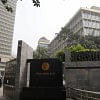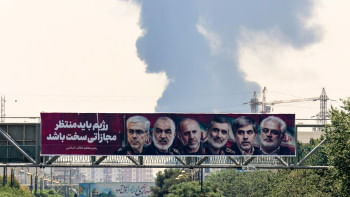Bank mergers: All dimensions must be considered

It has recently been reported that three weak Bangladeshi banks will merge with three relatively stronger banks. In two instances, Bangladesh Development Bank will be merged with Sonali Bank, and Rajshahi Krishi Unnayan Bank will merge with Bangladesh Krishi Unnayan Bank. A merger agreement is set to be confirmed among these four banks soon. Along with these, there have been reports that BASIC Bank will merge with Agrani Bank. And, a few weeks ago, a memorandum of understanding (MoU) for a merger was signed by officials of EXIM Bank and Padma Bank.
According to media reports, further mergers are on the cards involving private banks, including National Bank, AB Bank, Union Bank, Global Islami Bank, Bangladesh Commerce Bank, ICB Islamic Bank, and the National Bank of Pakistan (which is a foreign bank). Through such a process, the number of banks in Bangladesh may gradually be reduced from 61 to 50 or fewer.
Globally, mergers of banks, industries, and business enterprises are neither new nor uncommon. At various points in history, mergers have taken place in different economies, particularly during economic crises. In general, three things lead to such mergers. Firstly, to expand their economic influence, powerful enterprises engulf smaller and weaker ones. Secondly, strong entities take over weaker ones to reduce competition and ensure monopolistic power. And finally, problem-ridden entities are merged with sound enterprises to ensure market stability and confidence.
In that context, questions have been raised as to why so many banks in Bangladesh are being merged at the same time. Some indicate that given the size of the Bangladesh economy, the number of banks in the country has exceeded the optimal level. As a result, it was necessary to contract the banking sector to ensure sustainability, efficiency, and better services. People who are familiar with our banking sector think that unprecedented corruption and the bending of rules have made the entire banking sector in Bangladesh vulnerable. As a result, bad loans, loan defaults, and shortage of capital have become the norm. In addition, non-confidence and liquidity shortages are on the rise as well.
Against this backdrop, the government and Bangladesh Bank have looked at bank mergers as an option to increase stability. There is a perception that the current problems and instability of the country's banking sector have led to such mergers and that such a measure was needed to enhance confidence in the economy. Some argue that this measure was taken to rescue the weaker banks. Others, however, feel that bank mergers will allow corrupt groups to escape their liabilities. The vulnerability of the entire banking sector has been reported on as well. Under such circumstances, if the weaker banks are not merged with stronger ones, and if they fail, the whole banking sector would find itself in deep trouble.
In general, five issues need to be borne in mind when it comes to bank mergers in Bangladesh.
Firstly, if some banks fail to meet the criteria of competition and efficiency, it is better, by the rule of thumb, to let them die. The only exception could be a bank that is so big and so important that its death might have serious negative unbalancing impacts at the macroeconomic level of the country.
Secondly, if the merger could create a monopoly, then it should not be pursued. A monopolistic market will not provide competitive services to consumers and, as a result, the common people would lose out. The impacts of bank mergers on various sectors of the whole of the economy must also be evaluated.
Thirdly, to overcome the fundamental problems facing the banking sector in Bangladesh, structural reforms are necessary. Mergers cannot be the alternative to those unpalatable but necessary reforms.
Fourthly, if mergers take place in the banking sector, the job security of the workforce in weaker banks and the interest of the depositors of those banks must be ensured.
Finally, in the context of the overall economy, there is always an optimal number of banks to have. If the actual number of banks in the economy exceeds that optimal number, various vulnerabilities creep in. A pertinent question would be: if our banking sector suffers from such vulnerabilities, why have more new banks been approved? This issue needs to be examined. In other words, while attempts are being made to ensure better health of the banking sector through mergers—and as such reducing the number of banks—what is the justification behind giving approvals to new banks?
In addition to all these, three issues need consideration. One, weaker banks are not limited to the private sector, they also exist in the public sector. For example, BASIC Bank, a state-owned enterprise, is also part of the current merger process. This means that bank vulnerabilities exist in both private and public sectors. Two, the World Bank has recommended bank mergers, but with a request that such mergers should not be imposed on any entity. It should be remembered that in Bangladesh, the financial sector reform was initiated in the late 1980s with advice and direct interventions from the World Bank. Today, through various peaks and troughs, we have reached a point where the liabilities of the World Bank must also be assessed. Three, it has been argued that mergers were pursued to ensure the sound health of the banking sector. In that context, assurances must be given that the workforce of the weaker banks would not be curtailed and the interests of the depositors of those banks would be ensured.
The phenomenon of bank mergers is relatively new in Bangladesh. Therefore, the various dimensions and probable impacts of mergers must be objectively assessed. It is also necessary to not approach the process as a purely mechanical exercise, but rather through a combination of practical points of view and a human lens. At the same time, the entire merger programme must be implemented as part of an overall financial sector reform.
Dr Selim Jahan is the former director of UNDP's Human Development Report Office at UNDP in New York.
Views expressed in this article are the author's own.
Follow The Daily Star Opinion on Facebook for the latest opinions, commentaries and analyses by experts and professionals. To contribute your article or letter to The Daily Star Opinion, see our guidelines for submission.


 For all latest news, follow The Daily Star's Google News channel.
For all latest news, follow The Daily Star's Google News channel. 














Comments